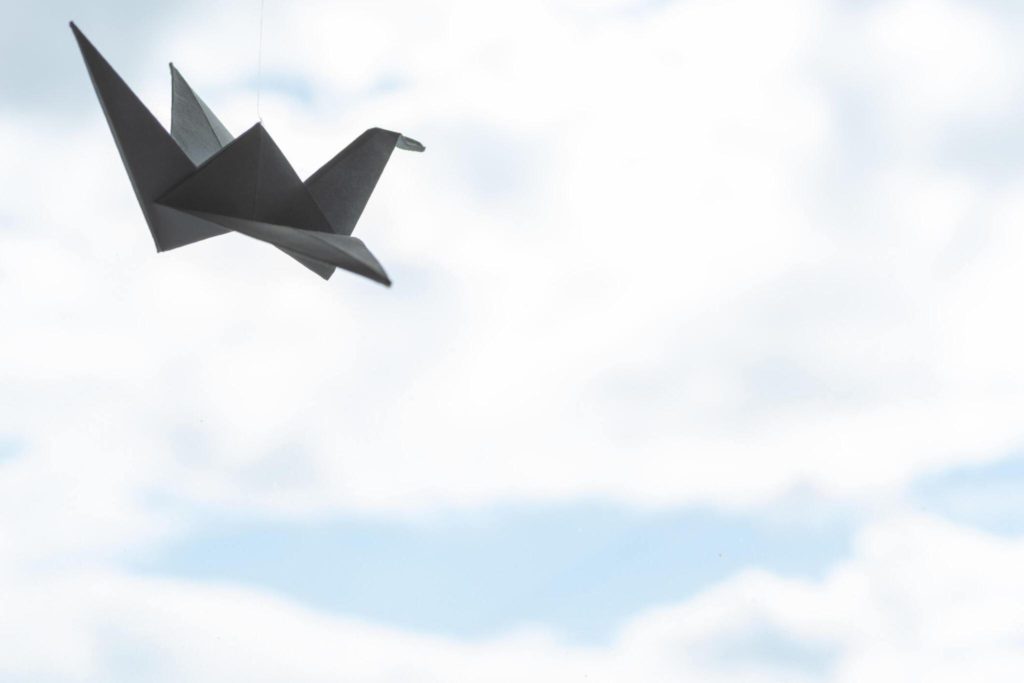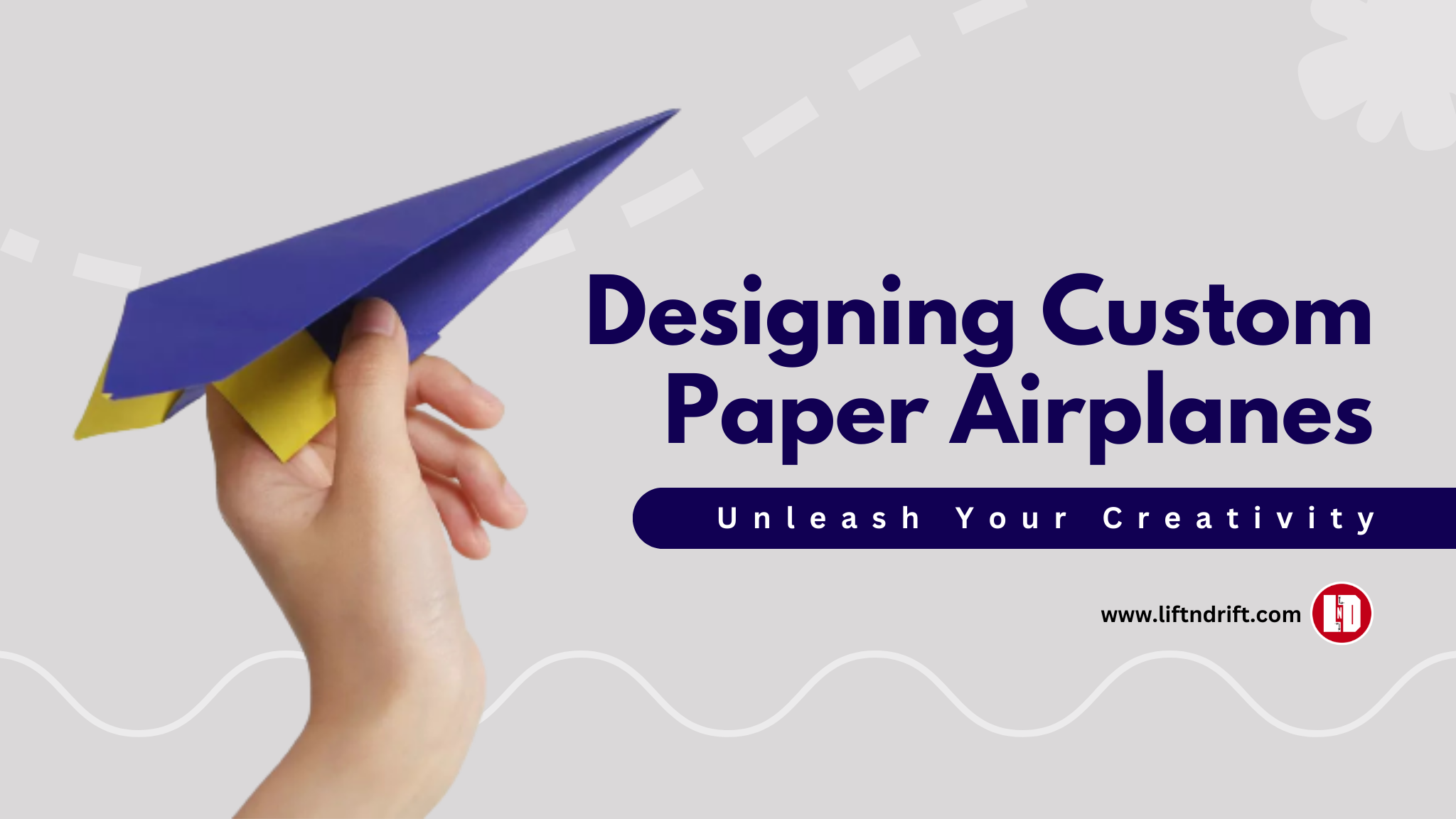Are you ready to take flight and explore the world of custom paper airplanes? Whether you’re a kid at heart or an aviation enthusiast, designing custom paper airplanes can be a thrilling and creative experience. In this comprehensive guide, we’ll teach you how to make unique paper airplane designs that soar through the sky with grace and style. So grab a sheet of paper, unleash your imagination, and let’s embark on this exciting journey together!

Table of Contents
| 1.Introduction |
| 2.The Science Behind Paper Airplanes |
| 3.Getting Started: Materials and Tools |
| 4.Basic Paper Airplane Folding Techniques |
| 5.How to Make a Paper Airplane: Step-by-StepInstructions |
| 6.Exploring Different Paper Airplane Designs The Mighty Reconn The Rocker The Floating Eagle The Skorpion The Racer |
| 7.Tips for Optimizing Performance and Distance |
| 8.Frequently Asked Questions (FAQs) |
1. Introduction
Paper airplanes have been capturing the imaginations of people of all ages for generations. These simple and elegant creations can fly through the air, performing acrobatic maneuvers and defying gravity. Designing custom paper airplanes allows you to tap into your creativity, experiment with aerodynamics, and witness the joy of flight firsthand.
In this guide, we’ll provide step-by-step instructions for making various paper airplane designs, from basic models to more advanced creations. We’ll also explore the science behind paper airplanes, understand how different designs affect flight characteristics, and offer tips on how to optimize their performance.
2. The Science Behind Paper Airplanes
Before we dive into the world of paper airplane design, let’s take a moment to understand the science that makes them soar. Flight is a delicate balance between lift, drag, weight, and thrust, and paper airplanes rely on these principles to achieve controlled flight.
To learn more about the scientific principles behind paper airplanes, you can visit Liftndrift, a website dedicated to the exploration of flight mechanics.
3. Getting Started: Materials and Tools
To get started with designing your custom paper airplanes, you’ll need a few basic materials and tools. Don’t worry; you won’t need a full-blown aircraft hangar to craft these flying wonders. Here’s what you’ll need:
- Paper: Start with a clean sheet of paper. Standard letter-size (8.5 x 11 inches) paper is readily available and works well for most designs. However, feel free to experiment with different paper sizes and weights to achieve different flight characteristics.
- Writing Utensil: Have a pencil or pen handy for marking folds and making design adjustments.
That’s it! With just these two simple tools, you’re ready to embark on your paper airplane design adventure.
4. Basic Paper Airplane Folding Techniques
Before we dive into specific designs, let’s familiarize ourselves with some basic folding techniques. These techniques will serve as the foundation for constructing any paper airplane design. Follow these steps to fold a basic paper airplane:
- Start with a clean sheet of paper, oriented in landscape format.
- Fold the paper in half lengthwise, creasing it firmly, and then unfold.
- Fold the top corners down to the center crease, forming two triangles.
- Fold the newly formed triangle at the top down, aligning its edge with the bottom edge of the paper.
- Fold the entire structure in half, with the folded triangle on the outside.
- Fold the wings down, leaving a small portion of the tail section unfolded.
Congratulations! You’ve just created a basic paper airplane. Now, let’s move on to some more exciting designs that will challenge your creativity and push the boundaries of flight.
5. How to Make a Paper Airplane: Step-by-Step Instructions
In this section, we’ll provide step-by-step instructions for creating three unique paper airplane designs: the Mighty Reconn, the Rocker, and the Floating Eagle. Each design offers a different flight experience, allowing you to explore various aerodynamic concepts. So, grab your paper and let’s get started!
The Mighty Reconn
The Mighty Reconn is a high-performance paper airplane designed for long-distance flights and excellent stability. Follow these steps to construct your very own Mighty Reconn:
- Start with a clean sheet of paper.
- Fold the paper in half lengthwise, creasing it firmly.
- Open the paper and fold the top edges down to the center crease, forming two triangles.
- Fold the bottom edge of the paper up to meet the top edge, creating a narrow rectangle.
- Fold the top edge of the rectangle down, aligning it with the bottom edge.
- Fold the entire structure in half along the center crease.
- Fold the wings down, leaving a small portion of the tail section unfolded.
For more detailed instructions and visual illustrations, visit Liftndrift website.
The Rocker
The Rocker is a dynamic paper airplane design that combines stability with playful flight characteristics. Follow these steps to create your own Rocker:
- Start with a clean sheet of paper.
- Fold the paper in half diagonally, creasing it firmly.
- Unfold the paper and fold the top corners down to the center crease, forming two triangles.
- Fold the top edge of the paper down, aligning it with the bottom edge.
- Fold the entire structure in half, with the folded triangle on the outside.
- Fold the wings down, leaving a small portion of the tail section unfolded.
For more detailed instructions and visual illustrations, visit Liftndrift website.
The Floating Eagle

The Floating Eagle is an elegant and majestic paper airplane design known for its smooth gliding capabilities. Follow these steps to craft your own Floating Eagle:
- Start with a clean sheet of paper.
- Fold the paper in half lengthwise, creasing it firmly.
- Fold the top corners down to the center crease, forming two triangles.
- Fold the top edges of the triangles down to meet the bottom edge, creating a narrow trapezoid shape.
- Fold the entire structure in half along the center crease, with the narrow end on the outside.
- Fold the wings down, leaving a small portion of the tail section unfolded.
For more detailed instructions and visual illustrations, visit Liftndrift website.
6. Exploring Different Paper Airplane Designs
In addition to the designs we’ve covered, there are countless other paper airplane designs waiting to be explored. Here are a few more notable designs you can try:
- The Skorpion
- The Racer
Feel free to experiment with different designs, adjust folding techniques, and unleash your creativity to create paper airplanes that truly represent your unique style.
7. Tips for Optimizing Performance and Distance
To ensure that your paper airplanes achieve maximum performance and distance, here are some valuable tips to keep in mind:
- Choose the Right Paper: Experiment with different paper weights and sizes to find the optimal balance between weight and aerodynamics.
- Precise Folds: Make clean and accurate folds to ensure stability and reduce drag during flight.
- Trim the Wings: Experiment with trimming the wings to fine-tune the flight characteristics of your paper airplane.
- Launch Technique: Master your launch technique by aiming for a slight upward trajectory to give your paper airplane the lift it needs.
- Test and Iterate: Don’t be afraid to experiment and adjust your designs. Each modification provides valuable insights into the principles of flight.
For more in-depth tips on optimizing your paper airplane’s performance, visit Liftndrift official website.
8. Frequently Asked Questions (FAQs)
Making a paper airplane is easy! Follow the step-by-step instructions provided in this guide for various paper airplane designs.
The Mighty Reconn and the Rocker are excellent designs for long-distance flights. Experiment with different designs to find the one that suits your preferences.
Absolutely! Different types of paper can yield different flight characteristics. Try using construction paper, cardstock, or even recycled materials to see how they affect your paper airplane’s performance.
Achieving a straight and far flight requires precise folding and a balanced design. Follow the instructions carefully, trim the wings if needed, and practice your launch technique.
Paper airplanes can be a fun and engaging activity for children. However, adult supervision is recommended, especially when using sharp tools for trimming or folding.
Absolutely! In fact, modifying existing designs is a fantastic way to explore your creativity and develop your own signature paper airplane style.
Designing custom paper airplanes is an exciting and rewarding hobby that combines creativity, physics, and the joy of flight. Whether you’re aiming for distance, acrobatics, or simply want to enjoy the magic of a graceful glide, the possibilities are endless. So gather your materials, follow the instructions, and let your imagination take flight. Unleash your creativity and discover a world of paper airplane design that is uniquely yours!
For more paper airplane design, tips, and inspiration, visit our website, your go-to resource for all things paper airplanes.
Safe travels and happy flying!
Disclaimer: The information provided in this blog post is for educational and entertainment purposes only. Always exercise caution and follow appropriate safety guidelines when engaging in any activity.

